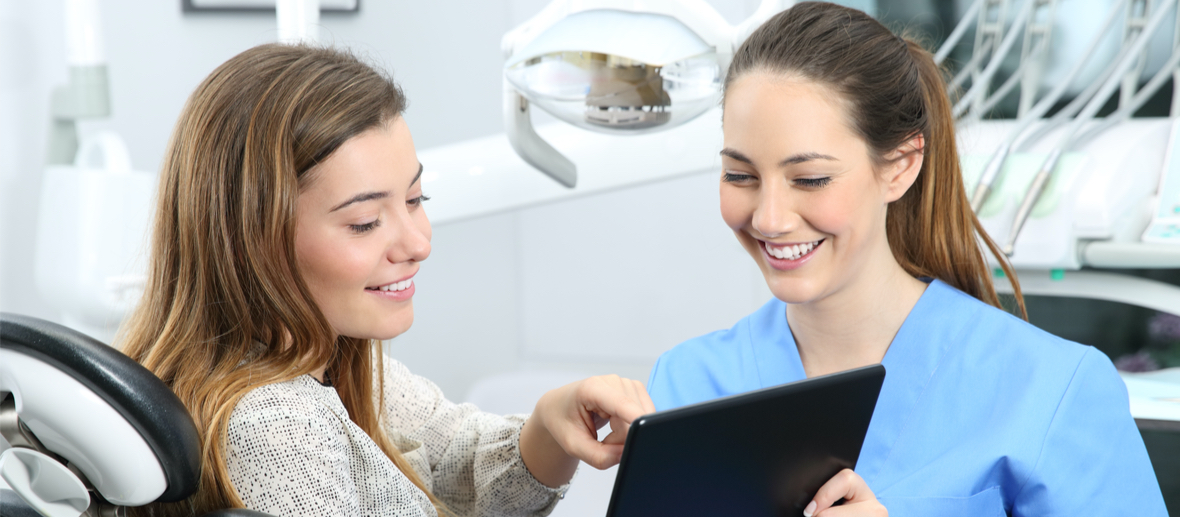

For the last decades, there seems to be a disbalance between the medical software and hardware with all the respect and appreciation being demonstrated only to the latter. Fortunately, the last few years have shown the opportunities for SaMD, while 2020 has demonstrated how crucial the healthcare management systems are. Now, both private and governmental healthcare organizations desperately need efficient software that can decrease the level of personal interrogations in hospitals and make medical help more affordable for more people.
Obviously, the medical software market will continue to grow. If you want to keep up with the trend and get your share in it, think of your own medical app development with the help of a reliable team of software engineers from whole world.
In this article, we have gathered the most popular questions asked by medical and IT companies and tried to give full answers to them. Another goal we pursued with this FAQ is showing you how easy it is to find an outsourcing company and hire professional developers at a moderate fee.
Check out our FAQ on SaMD and its development.
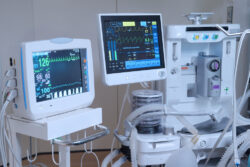
What is the software as a medical device (SaMD)?
The best definition of the software as a medical device is probably given by the International Medical Device Regulators Forum. It states that SaMD is software that targets a medical goal or goals and achieves them without being a part of hardware or driving medical hardware. Even though there is a limitation considering the connection between software and hardware, medical software still can be used as a part of or as an addition to other medical tools, products, and devices.
In official specifications, medical devices software is defined as one having an intended use, which means its effect should reflect the information provided by the producer of such a device. The medical device can be represented as an implant, a syringe, a wrap, a band, any kind of tool, part of the machinery, or apparatus, as well as an application for the cell phone with no material component.
Software as a medical device can be used for multiple purposes, including screening, prediction, controlling, and monitoring the state of the patient’s health, providing in vitro testing and diagnostic, prevention of diseases, controlling medical conditions, supporting life, etc. It also should be mentioned, that some jurisdictions, not to mention countries, treat tools intended for fertilization, birth control, and disinfection as medical devices, and some don’t which doesn’t make the standardization easier.

The IMDRF distinguishes four categories of software as a medical device and they are defined by the level of impact they have on a patient.
The SaMD of the 4th category is intended to diagnose or treat health conditions or situations in a critical state. An example will be software that helps to indicate the type of acute stroke the patient has had.
The 3rd category of SaMD is used when the serious condition or situation is treated; medical devices of this type have a high impact on the patient’s health. For example, mobile applications that use audio information to indicate the condition of an apnoea patient.
The 2nd category indicates the SaMD that is used in treating medium conditions and doesn’t have a serious impact on the patient’s health. For example, the software that helps diabetics to calculate their insulin intake or devices that analyze data on heart rate to evaluate the risks of arrhythmia in a patient.
The software as a medical device of the 1st category is considered to have a low impact on the patient with the non-serious condition or in a non-serious situation. The examples here are numerous: software that sends information about the patient’s pace, time in movement, or calories burned to the specialist; devices that store information on the heart rate, blood pressure, and other vital signs of the patient for their further analysis by the therapist; phone applications that use audio to diagnose hearing problems, etc.

How are regulators addressing the challenges with software as a medical device?
The statistic states that more than 21% of medsoft among other medical devices were recalled in 2018. This demonstrates how vigorously its development and application are controlled by the governmental service, like the FDA. To secure yourself, start from finding your company in the SIC codes list. A medical software development company should be reviewed, reported to, and controlled by the Office of Life Sciences.
The second step would be to check out the FDA recommendations to the production and managing of your medical device. As SaMD can have a dramatic impact on the person’s health and life, the Food and Drug Administration provides concise guidance towards custom medical software development, and it includes particular requirements towards its design, testing, and maintenance. These instructions are meant to minimize the risks of the software crash or malfunctioning that can affect the patient’s health, as well as the cybersecurity issues that can damage the patient’s confidentiality.
The design should be user-friendly and if the patient happens to use other tools for his or her condition, their knowledge of how these tools work should help them in using the software in question. Testing is completed in several steps and should include usability, functionality, operation, and environmental testing. There are specific recommendations to the bug-fixing too. The software development is quite flexible and the code mistakes which can influence the software work should be fixed as soon as possible.
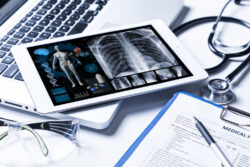
What are the examples of software as a medical device?
With multiple nutrition, sports, or birth-control applications that promise their clients to improve their health, it is hard to understand which of them are considered as SaMD, which are hardware driven by the medical software, and which are just fun-apps that are not even regulated by the FDA. Hopefully, this list of examples will help you to distinguish various types of medical tools.
One of Flytika’s examples that was fully implemented and user-tested is medical monitoring software. Flytika’s engineers have developed NiCaS, which is the part of a great non-invasive hemodynamic monitoring software owned by the NIMedical biotechnology company.
Another good example of SaMD is medical imaging software development. These are programs that provide analysis of medical images made by magnetic resonance imaging, endoscopy, electroencephalography, and other devices.
The in vitro diagnostic devices are also considered to be medical software. They analyze the specimens from the human body to monitor the person’s state of health or his or her particular condition. Along with software, this type of device also includes specimen receptacles and reagents. This software is frequently used by diabetics.
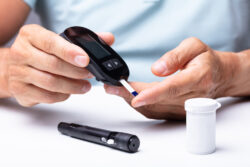
There is also healthcare management software, which includes medical accounting software. As a rule, the key users of these programs are hospitals and their staff. They are applied to optimize the patients’ data, keep track of insurance, and organize visits to the doctors and prescriptions writing.
The practice management system in healthcare, for example, creates personal accounts for hospitals, doctors, nurses, and patients, and maintains the information centralized. As this software deals with personal information of multiple people, cybersecurity becomes an important issue. Another thing that differentiates the SaMD from the healthcare software is that the latter’s functionality is frequently vast and it requires to be taught to the hospital’s staff by the healthcare developers or other team members responsible for the implantation of the new software in governmental or private hospitals.
What is a medical software development plan?
During the medical software development, there are more issues to be taken into consideration when compared to the production of devices which have no effect on human health and life. As SaMD is regulated by the government, the implementation plan includes applying for and gathering the documents necessary to release the final product. Along with planning which tools and methods will be used by the medical software developer, and more importantly, how to make it functioning, questions of safety and reliability take the major place. For this purpose, testing of this kind of software becomes crucial: it gets in several stages and includes risk management. After the testing, there are verification and validation processes.
Work on medical software doesn’t stop with the release: it should be maintained and developed. Every complaint from the end-user should be considered and the mistakes that occur should be eliminated immediately. In addition to that, every medical software should be constantly improved by the developers, including new options and additional functions. For this reason, there should be a problem resolution plan and development department, the communication between the R&D, the implantation specialists, sales managers, and the support team.
What are the peculiarities of UI design medical app?
As if the usability of applications wasn’t an issue by itself, it becomes even more complicated when it comes to safety-related apps like medical software. The medical software used by patients in their houses should be concise and easy-to-use, but what’s more, it should be secure. Medical software safety is not only the question of high-quality code but also the application usability.
The software design for medical devices takes several steps and should include multiple precautions. Namely, the risk of making a mistake by the user should be minimized. This can be done by developing a user-friendly interface that is close to those of devices and applications already used by the patient. The resemblance of your software’s interface to the popular devices on the market will help your customers to use it properly in a stressful situation.
When designing medical software for the patients, the companies should remember that their customers are not engineers, and what might be obvious for the healthcare staff is frequently obscured for people with no medical education.
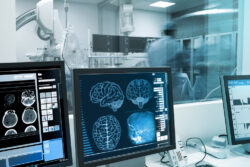
What are the design controls and how are they used in medical app design?
In 1990, the FDA developed the regulations that should be met by the medical software producers to get access to the market and have added them to the Good Manufacturing Practice. From that moment, every medical device has had to correspond to the design control requirements on the premarket level, when the changes can still be made to the final product.
There are characteristics that affect the design. These are the basics for the device design which is called the design inputs. They include the functionality of the device, its intended use, the users’ needs, the therapists needs, and some specific requirements.
The example of “specific requirements” can be blindness or vision problems of a patient. In the first case, the functions of the medical application or the device should be set out by voice. If the patients have vision problems, the application texts should be written in enlarged font size.
In every case, the design should be tested before the device production or the application release, and all the faults should be eliminated beforehand, as the producers should keep in mind that the design problems are one of three main reasons for the medical software recall.
What are the production and process control requirements?
According to the quality system regulations of the FDA, the high-risk devices, to which SaMD belongs, should be validated according to the production and process controls. This means that along with the risk management before and after production, the FDA has also developed procedures to monitor the production processes where the deviation of the medical device from the initial intended use is possible. The analysis of risks during the production and the monitoring of these production steps are necessary to validate software and allow it to the shelves.
The production and process control can also include post-production environmental testing to make sure that there are no deviations on the devices after the product acceptance. In case when the software cannot be fully validated, the documentation on risk analysis and control during production is necessary. In addition to this, the post-market responsibilities become larger year after year and they rest on the device manufacturer.
What is IEC 62304; What is a medical device software standard; What are the software life cycle processes?
IEC 62304 is an international standard composed by the International Electrotechnical Commission on the life cycle of the software of unknown pedigree (also known as SOUP). This means that safety-critical software like SaMD should be regulated by this standard. This standard is also acknowledged by the US and the EU regulatory authorities which makes it truly international.
All in all, IEC 62304 provides the criteria on which the medical software can be accepted on the market and describes the testing methods that should be implemented to guarantee the medical device safety. IEC 62304 controls the quality of medical software, coordinates risk management, and handles the safety classification of SaMD.
IEC 62304 as a medical standard determines and monitors every step of the software life cycle, including the planning, the risk analysis, the verification of incomplete or conflicting requirements, standardized testing of the software, testing of the UI, and the testing in the environment, which includes the human factor. The IEC 62304 application doesn’t stop with the release of the SaMD, as it also foresees the maintenance process, the risks management, and the problem resolution if some risks were not taken into consideration during the environmental testing.

What are the TIRs?
TIRs are the technical information reports published by the AAMI, the Association for the Advancement of Medical Instrumentation. Their goal is to provide a brief manual on the testing methods and acceptance of medical devices. It pays close attention to the maintenance of the SaMD, including cleansing of its external and internal surfaces, the use of exchangeable and constant parts, the materials and detergents that should be applied, etc.
Most of the TIRs composed by the AAMI are identical to the international standards of the US and European countries, but some of them are unique and have no analogs among other international standards. For example, TIR 45:2012 offers recommendations on the use of Agile practices for medical software development. TIR 57 gives advice on risk management, namely, it talks about cybersecurity importance when it comes to the software which can influence the health condition of a patient. TIR 36:2007 provides information on medical applications that are connected to the devices and gives multiple tools on testing software in order to manage risks.
List of other relevant software standards, TIRs, and guidance
Start your journey through the technical regulations and guidance for medical software with the ISO/IEC standards, like the ISO/IEC TR 12182:2015 which will help you to categorize your software.
Another important source of standards, especially if you’re going to sell your software on the US market are changes to the current medical policies, published by the FDA on September 27, 2019.
On December 13, 2016, the FDA also published the 21st-century cures act that is aimed at making healthcare and medical supplies more affordable and easily accessible by everyone.
In December 2017, the FDA issued a draft of high importance for the medical software developers, the clinical evaluations of software as a medical device.
Along with multiple acts and standards, FDA has offered draft guidance on electronic records and electronic signatures which is of high importance in ePrescriptions and operating modern hospitals.
All in all, to receive the most up-to-date information on the medical software standards, we recommend you to track the Association for the Advancement of Medical Instrumentation, the International Electrotechnical Commission, and the Food and Drug Administration official websites.
How to choose the best development company for you?
As you can see from the above, when it comes to medical software, things get a bit complicated, blurred with classification and governmental regulations. At least, you can delegate the software development to professionals and have the technical part of the production covered. Check out our recommendations on how to choose a reliable and affordable contractor.
What type of cooperation to choose if you want to hire medical software engineer?
If you’re searching for a development team to work on your medical project, check out outstaffing and outsourcing hiring models. They both are focused on hiring remote coders from any corner of the world and choosing those who suit your budgets. When it comes to the development of something as specific as SaMD, we do not recommend working with freelance marketplaces or unreliable partners.
Set up your mind and decide what kind of cooperation is more preferable for you. The main difference between outstaffing and outsourcing is that in the first case you get the full team of dedicated specialists who are ready to work on your project and in the second case you have more control over operating your developers. Both of these hiring methods share the same benefits.
The main benefit is the bigger selection of specialists working with various technologies if compared to your local labor market. The second pro is the better cost efficiency, as by hiring the remote team, you pay only for the completed tasks and not for the time your employees have spent in the office. Outstaffing and outsourcing have some disadvantages as well: as you delegate the management of your team to the contractor, you lose some part of the control and need to put more resources into communication with your developers. This means that to win from hiring a remote team of dedicated healthcare software developers, you have to find a reliable contractor that won’t cost you a fortune.
What benefits does Flytika provide?
Flytika takes a considerable place in the medical software companies list because of its vast experience in medical and healthcare development. Our engineers have been working on imaging software that analyzes medical images, on monitoring and signalizing software. We are also proud because of our participation in the 2nd class SaMD for critical situations development.
Another part of our expertise is document management in hospitals, including the development of practice management systems and the maintenance of electronic prescriptions. When it comes to the medical software, we understand that every step of the production is important, including testing, and for this reason, we pay maximum attention to the correct performance of software developed by our experts and the elimination of conflicts in the code, design, and the intended functionality.
However, an expertise in medical software development isn’t the only reason why you should hire us to make your dream project come true. We hire the best developers, QA specialists, designers, and UI/UX specialists that are going to work on your project according to the legislation in force. We make sure that our staff is satisfied with their work conditions and adds value to your project. With us, you get transparent accounting and financial reports on your dedicated team performance and the average fees of our developers are relatively low, composing $35-$45 per hour.
Conclusion: Is SaMD that difficult?
The production of software as a medical device of the 4th FDA category, as well as the development of healthcare applications, is not that easy or cheap, as it is linked with the governmental regulations in the US, in the EU countries, as well as worldwide.
Fortunately for most applications on AppleStore and Google Play, there are multiple healthcare-connected software and apps that don’t fall under the second to the fourth FDA category of the medical software and can be developed as common applications that have no crucial impact on the customer’s health or life.
What is more, the software focused on electronic prescriptions, organizing visits to doctors, and storing information about patients on the cloud is not considered to be the SaMD which makes their operation, release, and maintenance much easier. Some countries and jurisdictions have their own point of view on nutrition and birth control applications and software, which makes these spheres of business more appealing and achievable for the startuppers.
If you’re the US or the EU-based business wishing to release stunning software and not go broke, you can decrease the price of your project development by hiring a reliable outstaffing company. By doing so, you will not only fit into your budget but also get access to the pool of rare technical specialists ready to dedicate their expertise and skills to your medical project.
Flytika has been working on software development for more than 14 years and thanks to this vast experience, today it is considered the prominent player on the SaMD development market. Trust your project to our company and hire the team that will make your dream project come true.
- healthcare developers
- healthcare management software
- medical app development
- medical devices software
- medical software developer
- medical software engineer
- medsoft
- software design for medical devices





